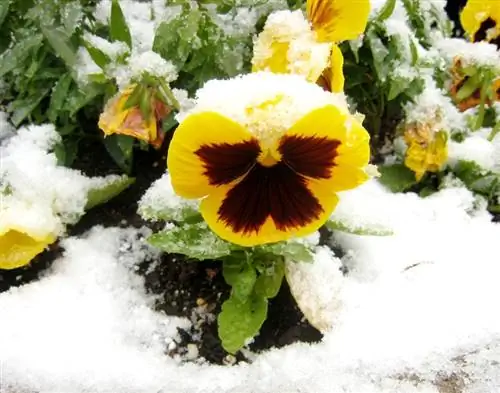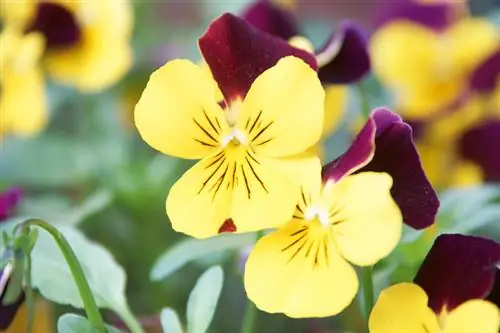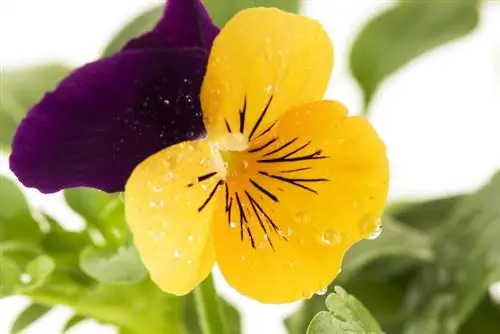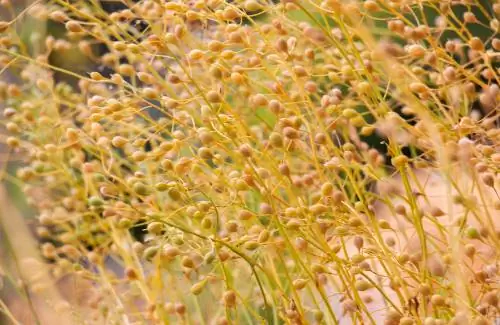- Author admin [email protected].
- Public 2023-12-16 16:46.
- Last modified 2025-01-23 11:20.
Horn violets are among the first flowers to appear in spring. Sometimes their flowers even peek out from a gentle blanket of snow. But can horned violets tolerate frost? Are they perennial and sprout again after a winter period?

Do horned violets tolerate frost and how can you protect them?
Horn violets are perennial plants and tolerate frost well because they have glycerin in their cells, which protects them from frostbite. However, winter protection with brushwood, leaves or fleece can be useful during long frost periods to protect you from frost and winter wetness.
Used to low temperatures
Horned violets originate in the Pyrenees and parts of northern Spain. They can thrive up to 2,500 m. This shows that they are not afraid of low temperatures. They can tolerate frost.
Glycerin protects against frostbite
Glycerin is found in the cells of horned violets. This substance protects the plants from frostbite. However, these plants are usually only one to two years old. But they can also be perennial if they are rejuvenated regularly.
Hybrids are frost hardy up to 15 °C
If you are looking for particularly hardy horned violets, ask when buying which varieties are advertised as having good winter hardiness. There are hybrids that are frost-resistant down to -15 °C. The majority of horned violets can easily cope with temperatures down to -5 °C.
Protect as a precaution in winter?
To ensure that the horned violets survive the winter, you can overwinter them or make them frost-proof. This is particularly worthwhile if you live in a region where there are often long periods of frost in the winter.
If temperatures are below 0 °C for a long time, winter protection is recommended. Otherwise, you don't need to worry about these growths. Winter protection can be implemented in the form of a protective material. For example, the following materials are suitable:
- brushwood
- Leaves
- Spruce and fir branches
- fleece
A layer of brushwood is good for horned violets outdoors. The brushwood is simply placed over the root area. Horned violets that are in pots or boxes on the balcony should be covered with fleece.
Be careful of cold frost and winter wetness
There are two things that harm horned violets in winter. These are cold frost and winter wetness. If it is cold and there is no snow, the horned violets could dry out (the root ball is frozen and cannot absorb new water). It is better if there is a protective blanket of snow over the horned violets.
To avoid winter wetness, the horned violets should be placed in a protected place in the pot and have good drainage. It is also important not to water them too much. As long as the soil is not dry, watering should be avoided.
Plant before or after frost
When there is no frost or heat, the best time to plant horned violets has come. To bloom in spring, these edible plants should be planted in fall.
Tips & Tricks
If the winter is mild, the horned violets can bloom all winter long. Only when there is severe frost does the flowering of these plants stop.






